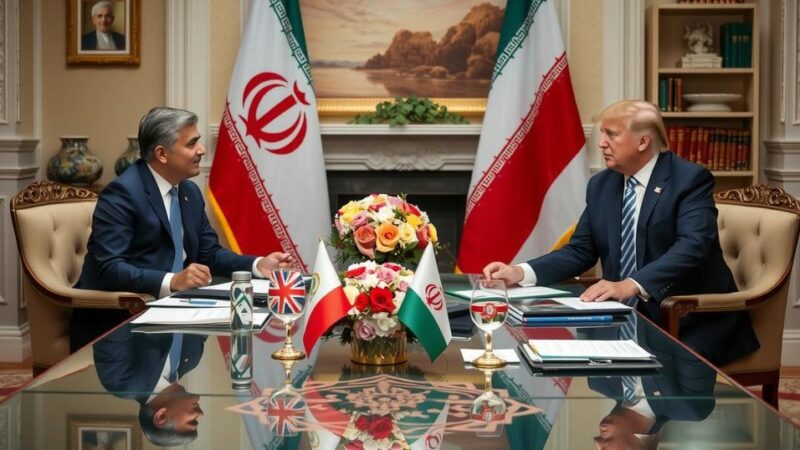The collapse of Assad’s regime in Syria has caused a split within Iranian authorities regarding foreign policy directions. Some view the outcome negatively, while others see it as a necessary shift away from religiously-driven strategies. With potential consequences for Iranian influence in the region, analysts predict greater scrutiny of Iran’s nuclear ambitions amid this transitional landscape.
The recent collapse of Bashar al-Assad’s regime in Syria has elicited a divided response from Iranian authorities, caught off guard by the rapid territorial gains made by rebel forces. Iranian officials did not anticipate the swift disintegration of the Syrian military, which left key border checkpoints unmanned, primarily due to ongoing Israeli airstrikes against Iranian targets. In light of this upheaval, Iranian state media swiftly shifted its terminology, reframing rebels as ‘armed groups’ rather than ‘terrorists.’ Amidst the chaos, the Iranian leadership has attempted to reassure its public, leaking reports of guarantees from rebel leaders concerning the preservation of sacred Shia sites within Syria.
The implications of Assad’s fall have incited a spectrum of reactions within Iran. Some conservative factions express dissatisfaction, arguing that the Iranian government failed to uphold its commitments to the Assad regime and succumbed to reformist pressures for diplomatic agreements. They regard Assad as instrumental in countering extremist groups threatening Iran’s interests. Conversely, a substantial segment of Iranian society, particularly reformists, views the regime’s downfall as an opportunity to reevaluate Iran’s foreign policy, advocating a shift from prioritizing religious ideology towards pragmatic national interests.
The Iranian response ranges from pursuing diplomatic engagement with rebel factions to exploring the establishment of new proxy groups in Syria. Analysts suggest that Iran should adapt to the new landscape by maintaining its strategic presence in a more discreet manner, adapting its alliances within the region. Meanwhile, Iranian leaders, including Ayatollah Ali Khamenei, assert that resistance against perceived adversaries will continue to galvanize.
Furthermore, the geopolitical void left by Assad’s departure could prompt shifts among regional players dissatisfied with the current situation, potentially providing Iran new avenues for influence. As tension builds within the region, the prospect of increased scrutiny on Iran’s nuclear ambitions looms larger, as developments in Syria might provide Western powers with justification for renewed actions targeting Iranian interests.
As the Iranian establishment grapples with this evolving situation, critical assessments of its policies and actions will likely shape future strategies in response to a complex and unstable regional landscape.
The Syrian conflict has significantly impacted Iran’s geopolitical strategy, particularly its support for the Assad regime, which Iran viewed as essential for countering both Israel and extremist groups in the region. The unexpected speed of the Syrian military’s collapse and the subsequent advances of rebel forces have challenged Iran’s strategic calculations, leading to a reevaluation of its position and engagements in the country. The ramifications of this collapse extend beyond Syria, potentially affecting Iranian influence in Lebanon and its broader regional strategy.
The Iranian establishment faces increasing challenges as the fall of Assad disrupts its longstanding strategy in Syria and raises questions about its foreign policy direction. A divided internal response reflects widespread anxiety regarding the future of Iranian influence, the efficacy of its alliances, and regional stability. As Iran reassesses its approach, external powers may seize the moment to address issues such as Iran’s nuclear program, suggesting that the consequences of the Syrian turmoil will be felt far and wide.
Original Source: www.middleeasteye.net







